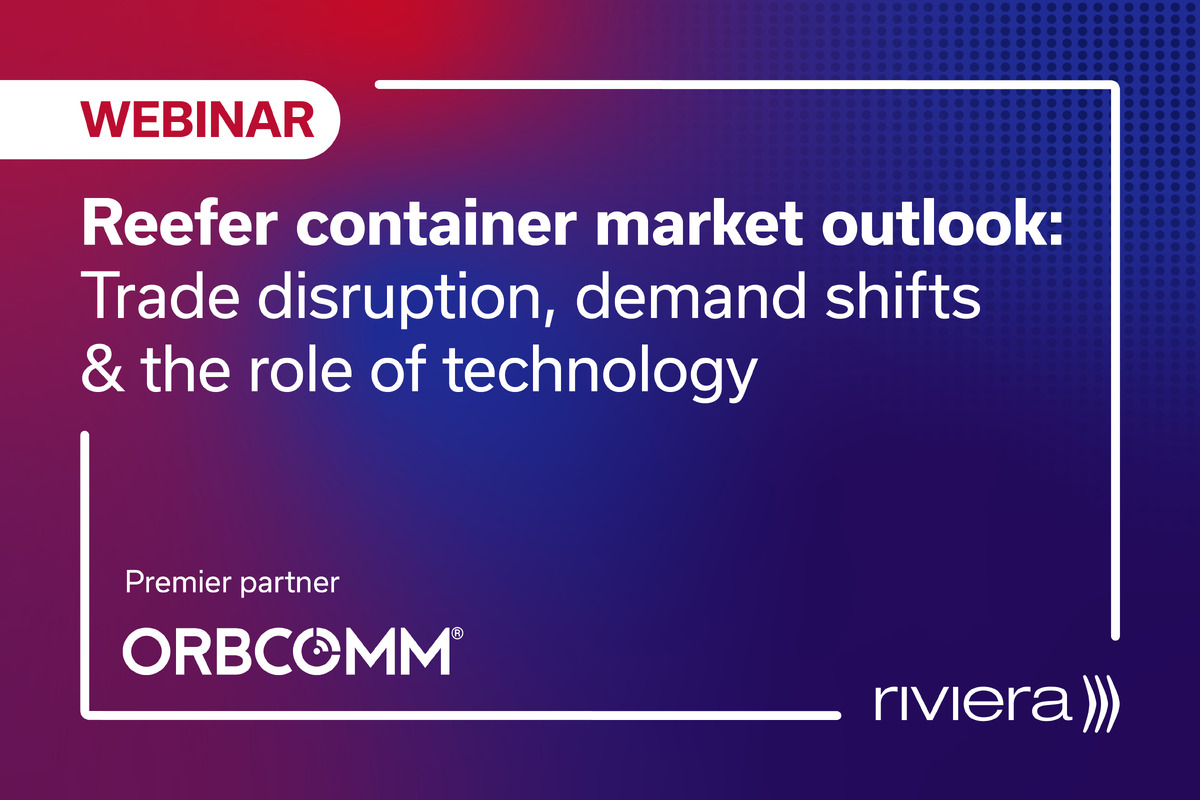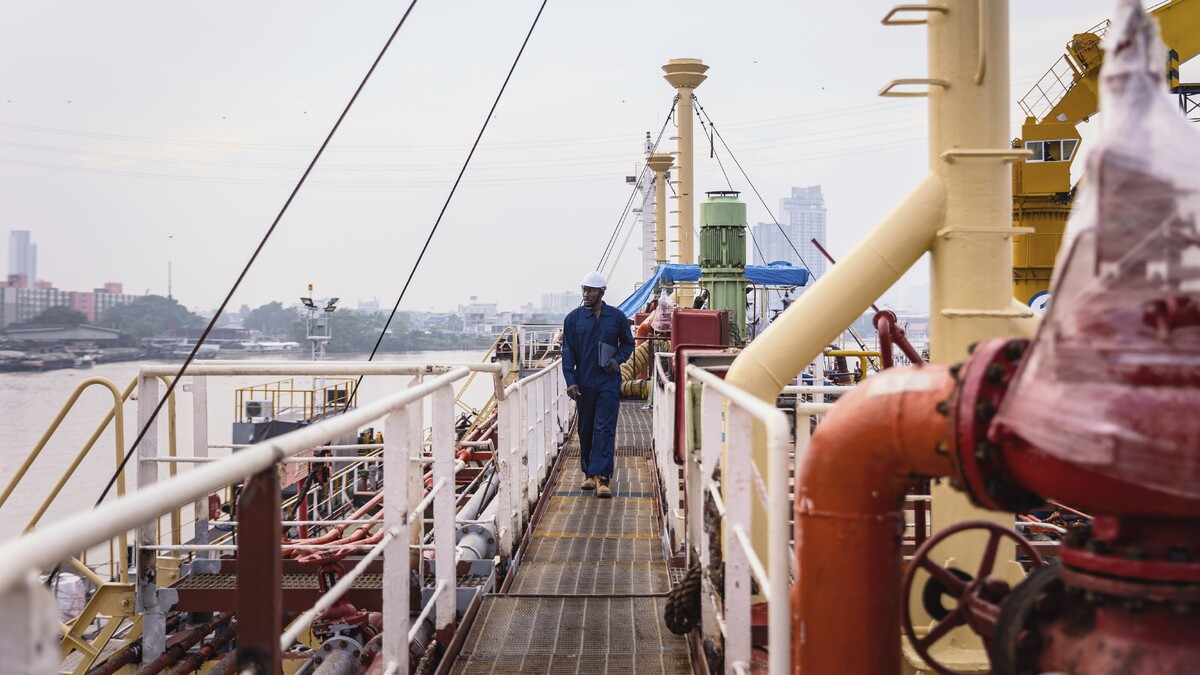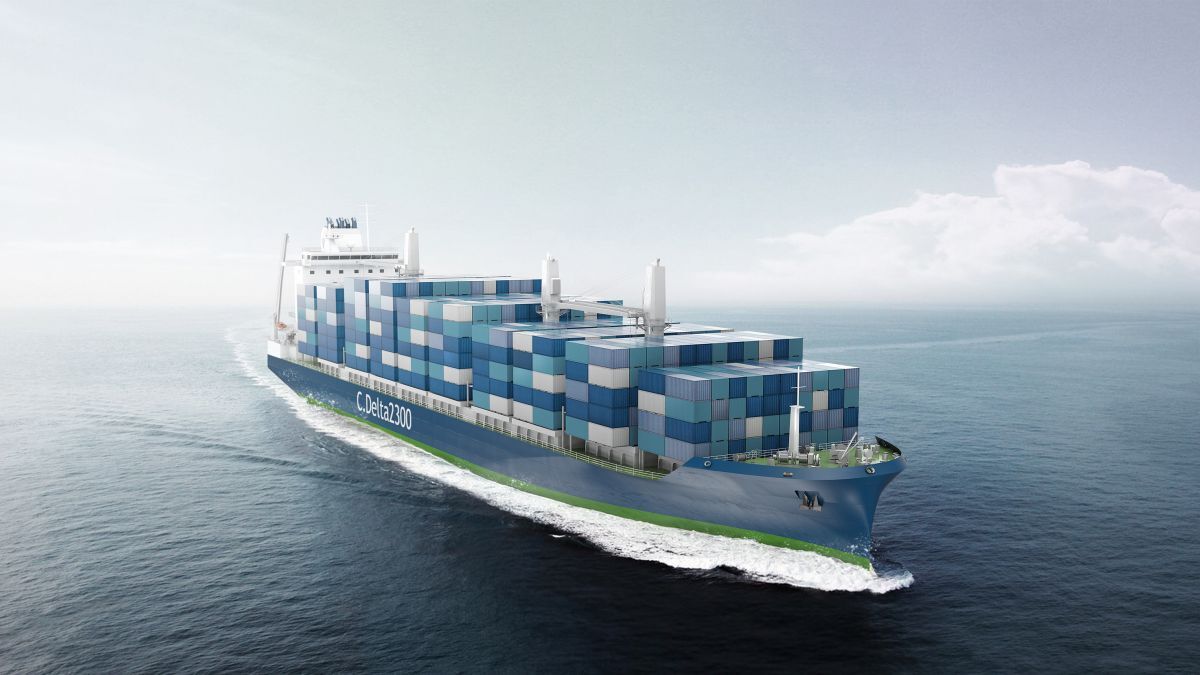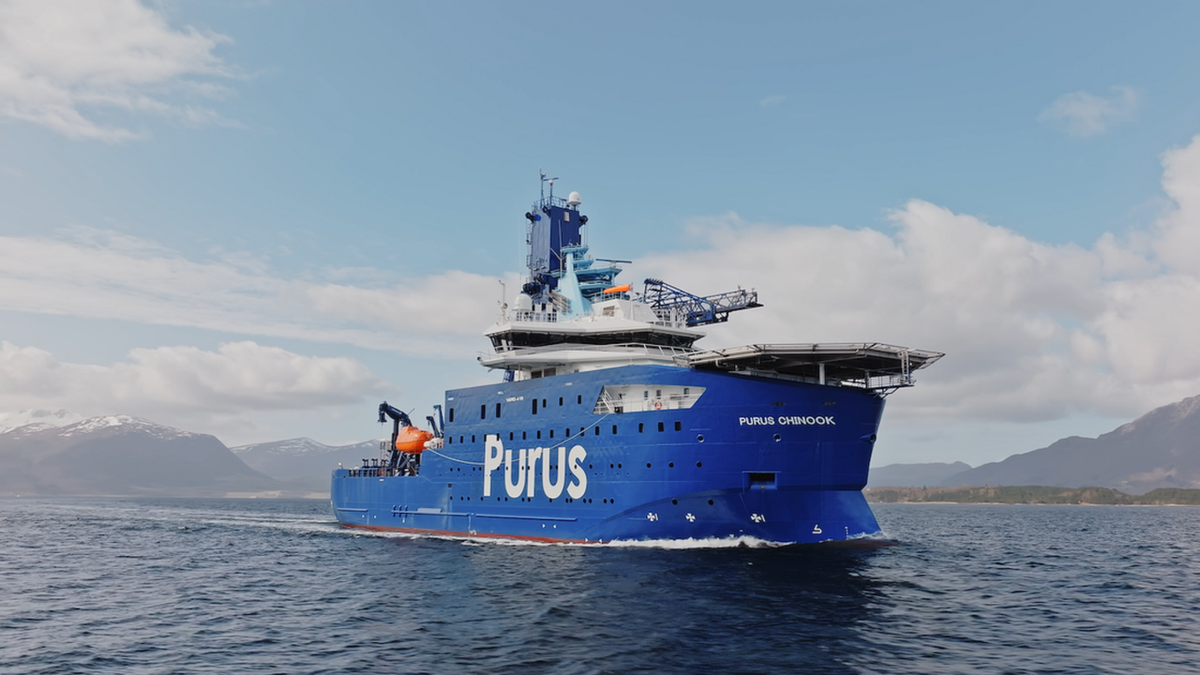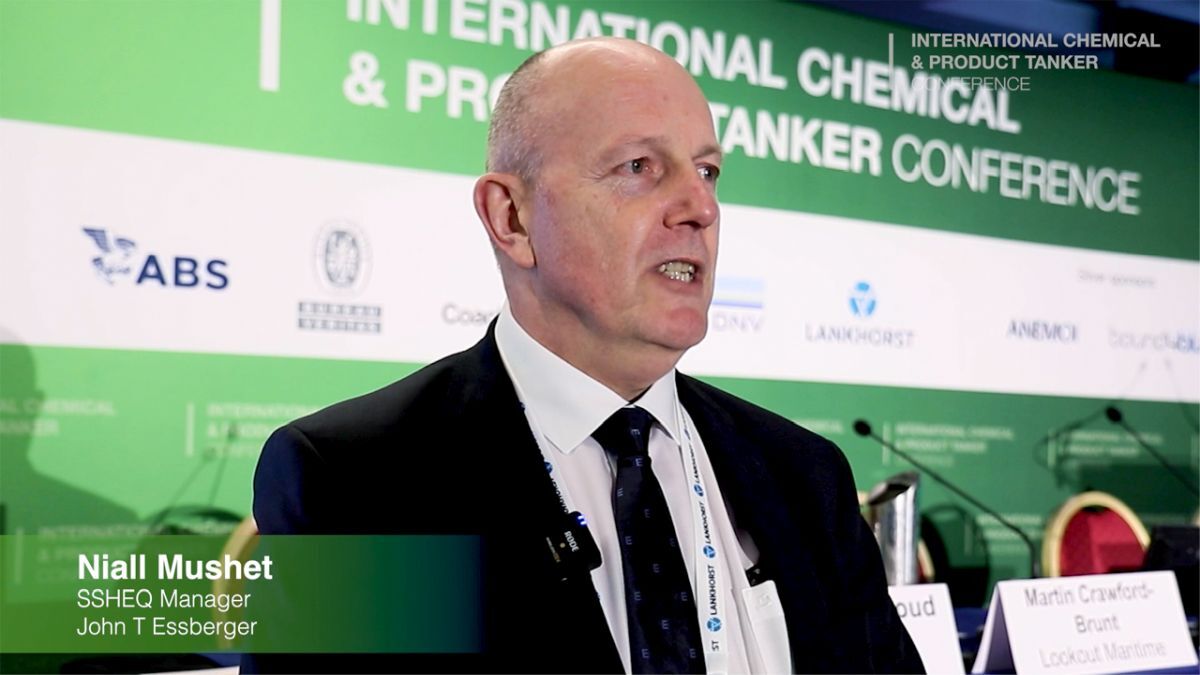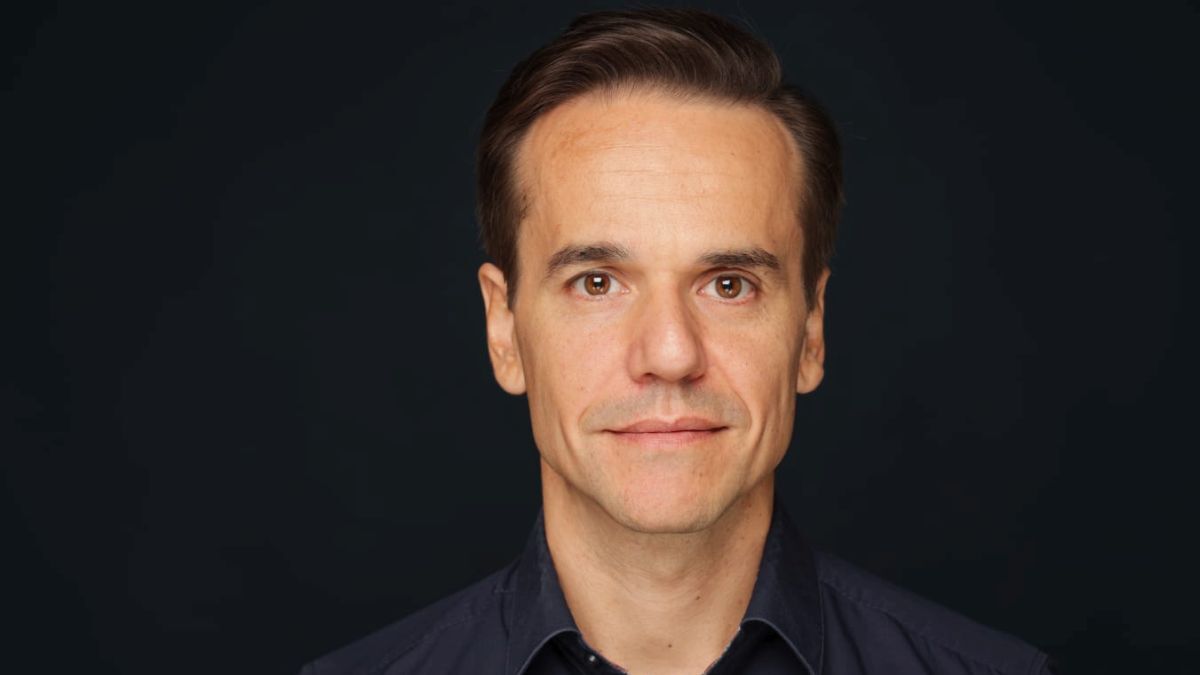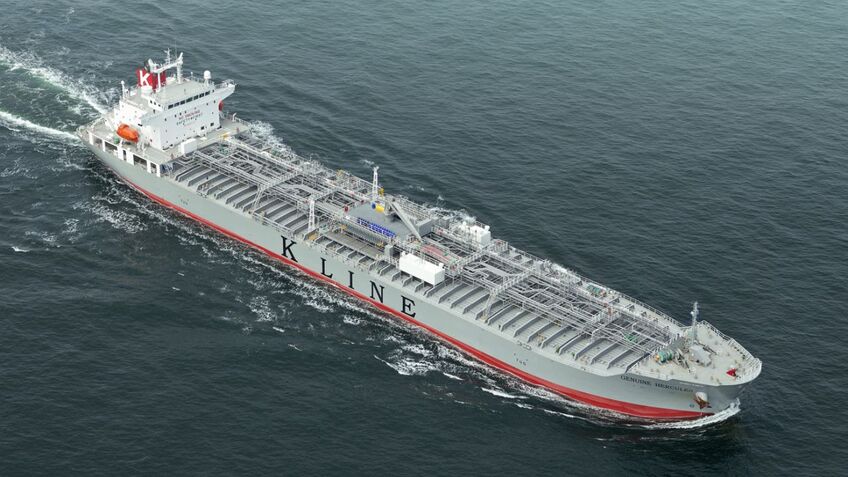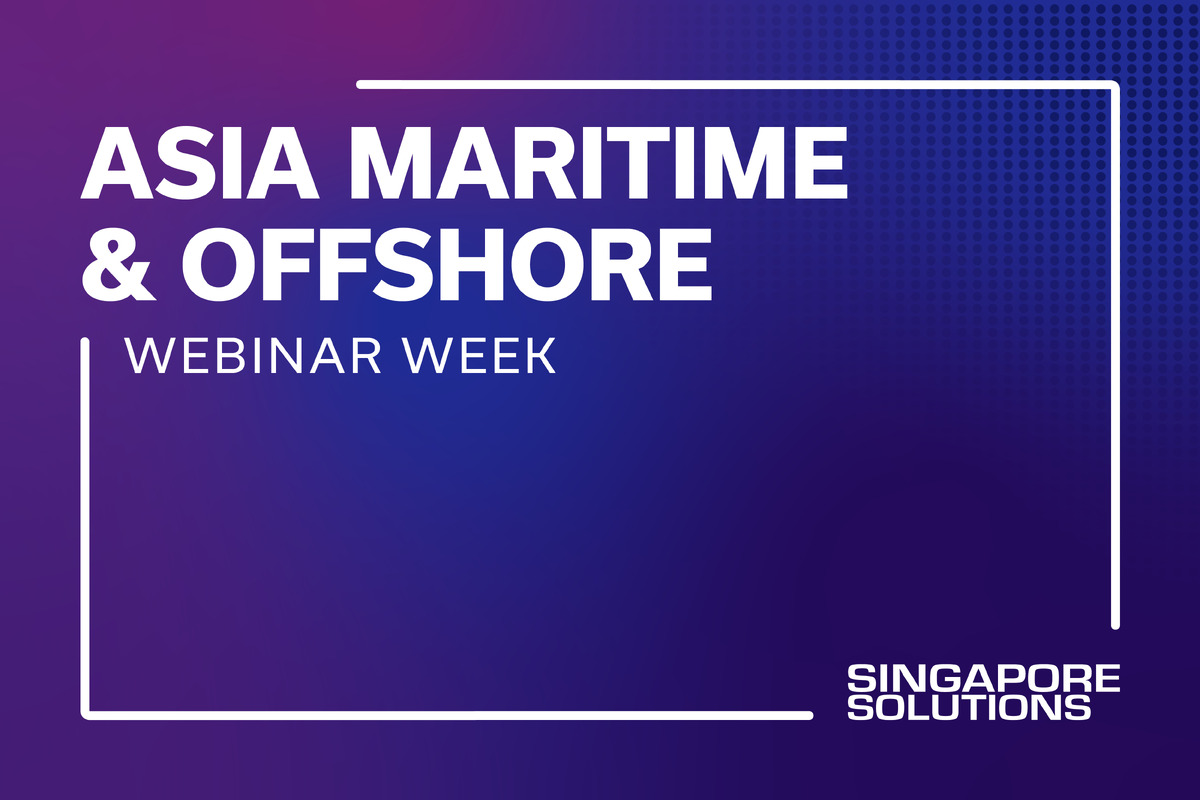Business Sectors
Contents
Register to read more articles.
LNG: bridging the gap for other alternative box ship fuels
The use of LNG as fuel continues to expand within the container ship sector, and is preparation for the transition to lower-emissions fuels
LNG is starting to act as a bridge for the use of other alternative fuels in the container ship sector.
TGE Marine Gas Engineering has worked on some of the leading LNG-fuelled vessels within the container sector – and expects LNG to be partially substituted by bioLNG and synthetic LNG in the future.
The German-headquartered company was involved in the first LNG retrofit in the box ship sector. In 2017, ElbBlue – then named Wes Amelie – was retrofitted with a dual-fuel engine made by MAN Energy Solutions to operate on LNG. TGE Marine Gas Engineering provided the tank and LNG fuel gas system for the project.
In September 2021, in a world first for the marine industry, Unifeeder-operated ElbBlue was fuelled with liquefied synthetic natural gas (SNG) for a trial voyage.
TGE Marine general manager and head of business development and sales Björn Munko tells CST, “It is exciting to see the vessel has been running recently on synthetic gas. Alternative fuels using bioLNG or synthetic gas are a big topic now. There has been an announcement for its use in the US and a bioLNG project is being funded by the EU in the Netherlands.
“To decarbonise, in the future we will see a significant substitution for fossil LNG with bioLNG or synthetic LNG. With LNG, the infrastructure is there as it has been developed over the past 10 years. It is exciting to see this happening on the vessels TGE Marine has supplied LNG components and tanks to.”
He sums up, “We believe that while LNG may be a transition fuel, it is here to stay for a long time.”
Meanwhile, TGE Marine Gas Engineering sales manager Dieter Hilmes says, “We see LNG as state-of-the-art now, the fuel is available, and all the major container ship players are going for it, like Hapag-Lloyd, CMA CGM and MSC. Later, we will see ammonia and methanol and in 20-30 years, we will see a fuel mix. Ammonia is famous now, and hydrogen could be used for the smaller trades, LNG for longer trades – there will be plenty of fuels in the future.”
He adds, “Many shipping lines are asking for ammonia-ready ships that can run with LNG and then later retrofit the main and auxiliary engines to run with ammonia. From our perspective, the tank and bunkering stations can already be delivered and installed ammonia ready.
“Owners have to look in this direction, ships are operated for a long time, so they need to be prepared. We are sure we will see ammonia as a major marine fuel in the future.”
He highlights how the future looks bright for LNG box ship newbuilds and retrofits. Singling out policy in Germany, he says, “Extensive subsidies are being spent by the German Government to bring LNG to newbuilds and retrofits. We are confident we will see new projects coming up for German shipowners.”
As well as the Wes Amelie project, TGE Marine has supplied the low-pressure fuel gas supply system with three vertical Type C foam-insulated gas tanks each for Containerships’ class of LNG dual-fuel feeder ships.
It has also supplied the LNG tanks and components to a 4,225-TEU container ship currently being built, that is due to trade between the US west coast and Hawaii.
Mr Munko says, “We see a lot of projects in the large-scale market like the CMA CGM vessels ordered, there is great development there, and we can also deliver systems for membrane tanks [as used in the larger vessels] and do projects for large container vessels. Our sweet spot is type C tanks, which is what we have doing the last 40 years.”
He adds, “Type C has numerous advantages, especially on smaller-scale vessels.”
To avoid cargo space being lost on larger ships, he explains TGE Marine has a competitive Tri-Lobe concept that involves a vertical arrangement of several tanks lying on top of each other. This can be used on vessels of up to 13,000 TEU.
Mr Hilmes comments, “Type C tanks are very flexible, they are the first choice if talking about refits as you can build it outside the vessel and bring it in one piece fitted with pumps and equipment into a retrofit vessel. They can easily handle four or eight bar pressure, so use a pressure build-up operation which gives the operator maximum flexibility in handling boil-off gas.”

From LNG to ammonia
GTT is another company that shows how LNG can be used as transitional fuel for future fuels – it is providing ‘ammonia-ready’ tanks for LNG-fuelled box ships. It has received an order from its partner South Korean shipyard Samsung Heavy Industries for the fuel tank design of five 15,000-TEU LNG-fuelled container vessels, on behalf of shipowner Seaspan Corporation and charterer ZIM.
The fuel tank of each vessel will offer a capacity of 12,000 m3 and will be fitted with the Mark III membrane containment system.
GTT says, “The Mark III membrane technology tank has been adapted for compatibility with ammonia, offering both Seaspan and ZIM greater operational flexibility in case of changes in environmental regulations.”
Elsewhere, Liberian Registry has many newbuild LNG-fuelled container ships on the orderbooks coming under the flag in the coming years. Liberian Registry vice president of LNG and offshore and general manager of LISCR Houston, Dallas Smith says, “This is not only because of our services, quality record, or cost-savings, but in large part due to the team of experts we have put together to form Liberia’s Global Gas team.
“There are several new technologies coming online where the IGC and IGF Codes haven’t caught up, and in these areas, we will use a risk-based approach in close collaboration with all key stakeholders to address any deviations from the prescriptive rules and regulations.”
Highlighting the main considerations and challenges of LNG propulsion for container ships, Mr Smith says, “LNG is still relatively new as a cargo, so the biggest challenge is crew training and finding experienced crew members. However, our certification department is working with owners to find creative ways to ensure the crew members are adequately trained by simulator or witnessing LNG bunkering operations.
LISCR executive vice president Benson Peretti adds, “Whatever the fuel source adopted, or engine type employed, it will come down to people. The crew that will operate these vessels must be properly trained in the new systems, how they work and their specific safety concerns and operational risks. We must ensure crews know how to operate the new, and in most cases increasingly complex, equipment. Training and certifying competent crew will be essential.
“Having good crew will now be more important than ever, and this comes at a time when we see less inclination for many to pursue a career at sea. Both Dallas and I have extensive time at sea, and we know how much the industry has progressed in the few short years since we were last out there. These changes happen at speed, and we need the right crew to meet this challenge.”
Retrofits versus newbuilds
Container ship retrofits have been much slower than newbuilds so far, for multiple reasons. Mr Peretti comments, “We have seen newbuilding orders increasingly include dual-fuel, or dual-fuel-ready technologies aboard. While looking at retrofitting, in this hot box ship market to take a vessel out of service to retrofit may not be as financially beneficial as keeping the ships currently at sea trading in this market while building new tonnage to cover dual-fuel.”
But retrofits are starting to happen, and look set to speed up. Mr Peretti points out that in the US, older Jones Act compliant-vessels have been taken from steam plants to LNG engines. “This is a clear investment in the future of US shipping,” he says.
Furthermore, upcoming regulations and new designs suggest there will be more LNG retrofits. Mr Smith says, “Once we get closer to the new EEXI and CII requirements going into force there will be more retrofits taking place. The biggest challenges for repowering to burn LNG is the storage space issue and the cost, but I have seen several new designs and the cost has begun to adjust. There will be a big push for retrofits as we approach the January 2023 requirements.”
Looking ahead at the way LNG will develop within the container ship sector, Mr Smith says, “I have seen LNG as a fuel grow significantly in the container ship sector and I expect this to continue as more LNG bunker vessels come online. There has been huge growth in LNG bunker vessels in the US, Europe and Asia and this will continue to grow.”
Mr Peretti adds, “I see LNG as the logical step for container ships given most are on liner service, and trade into regular ports where the LNG bunkering infrastructure can be established and utilised. To benefit from LNG engines, you have to have access to LNG fuel.”
Deltamarin has also been developing LNG designs for cargo and container vessels. The company started developing a 2,300-TEU design in October 2013.
Deltamarin sales manager Kristian Knaapi explains, “The goal was set to develop the best of the class design with superior performance in terms of fuel economy, capacity, efficiency and flexibility. DNV has been supporting Deltamarin providing valuable feedback, which resulted in an approval in principle.
“Throughout the design development, the target has been to have a platform which can be modified to meet customers’ optional requirements and provide alternative fuel options, ie, a ’future-proof’ approach can be taken, planning for possible alternative fuels to reduce the carbon footprint.”
Deltamarin also has LNG feeder vessel designs with C-type tanks up to 1,300 m3 and a long-range option with membrane tanks up to 2,500 m3. Currently, it is developing a smaller size feeder vessel design.
C.Delta: LNG, methanol, ammonia and hydrogen
In March 2021, Deltamarin introduced its LNG-powered C.Delta-series Kielmax container vessel C.Delta2100. This latest C.Delta design can use fuel options including LNG, methanol, ammonia and hydrogen.
Commenting on the design, Mr Knaapi says, “LNG makes sense due to the immediate emissions reduction it provides compared with HFO and MGO. It is currently the only alternative fuel with an existing and well-established infrastructure in place, the engine technology is mature. LNG can be combined with new technologies and operational measures to meet the 2030 emissions-reduction goals, and it can contribute to further reductions in future, if blended with bioLNG or synthetic or renewable natural gas. In addition, it is possible to go for an ammonia-ready design by selecting a suitable tank material without major changes.
“Owners are facing complex investment decisions as they try to identify the optimum course to the low-carbon future mandated by IMO. In the short term, LNG is a natural fuel during transition phase before other alternative fuels and technologies are available. Therefore, it is important to have a future-proof design which can be later converted.”
He says while LNG technology is mature and well regulated, from a design point of view the space utilisation can be challenging especially concerning space reservations for future technologies like fuel cells and batteries.
While newbuilding costs can be 15-30% higher compared with conventional fuelled vessels, Mr Knaapi says it can pay off as charterers are increasingly favouring vessels with a lower environmental footprint.
Marine Propulsion Lubricants Webinar Week will be held from 24 January 2022. Register your interest here.
Related to this Story
Safe Bulkers reports improved carbon intensity and eyes 'green' technologies
Events
Reefer container market outlook: Trade disruption, demand shifts & the role of technology
Asia Maritime & Offshore Webinar Week 2025
Marine Lubricants Webinar Week 2025
CO2 Shipping & Terminals Conference 2025
© 2024 Riviera Maritime Media Ltd.
